Addressing the complex issues arising from climate change, urbanization, and human encroachment into natural habitats necessitates the establishment of harmonious interactions between humans and wildlife.Implementing thoughtful strategies can mitigate potential conflicts, safeguard biodiversity, and promote ecological connectivity.
Wildlife bridges are structures built over roads and fragmented landscapes to enable animals to safely cross from one side to the other. These structures aim to reduce the impact of human infrastructure on wildlife populations, decrease the risk of vehicle-animal collisions, and maintain ecological connectivity. Notably, these structures are designed to seamlessly blend with the natural terrain, creating an environment that encourages animal use. Additionally, wildlife bridges are often adorned with native vegetation and natural features, enhancing their appeal and familiarity to wildlife.
REFERENCE OF WILDLIFE PASSAGE AND ROTATING BRIDGE
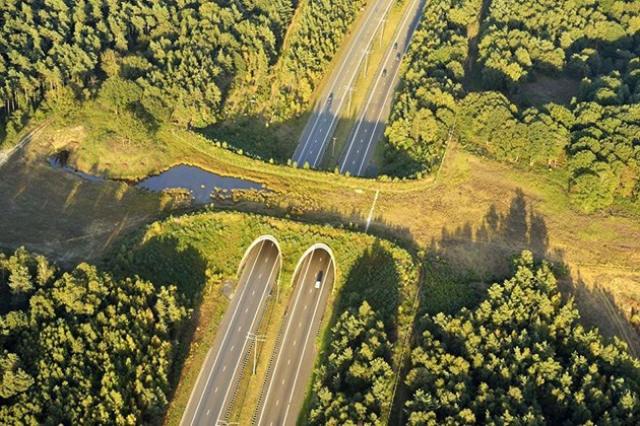
https://ecotourism-world.com/es/proteger-la-vida-silvestre-con-un-puente-de-animales/
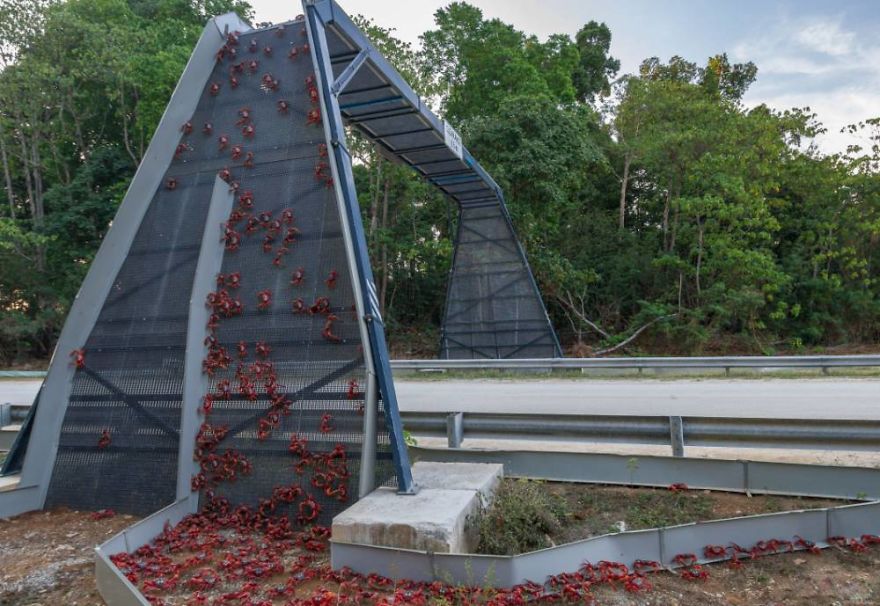
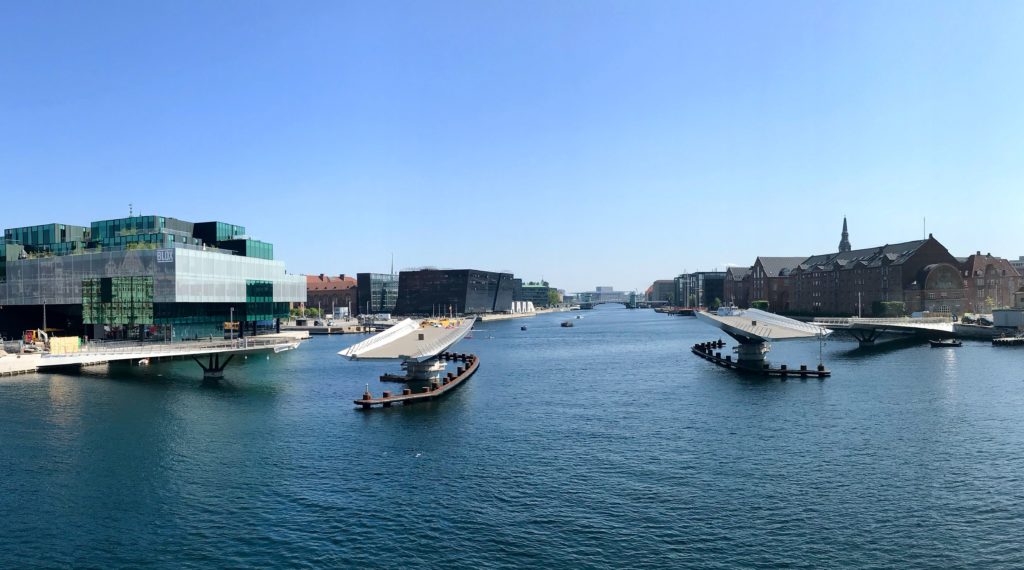
This bridge is an adaptation of a wildlife bridge that helps animals and humans pass over flooded areas due to human actions and interventions.
By the aid of a Water Level Detection Sensor the percentage and level of water in the stream below will be measured. If water is detected, then animals can not pass freely, the bridge will need to be activated. An ultrasonic sensor will be working from that point on to see if animals (or humans) are getting close to this area. When an object is detected close by the Servo Motor will turn 90 degrees to allow access to the bridge. After this procedure is done the bridge will go back to its starting neutral position to let animals use their natural paths. If the first sensor does not detect water, the bridge will maintain its original state to minimize unnecessary interactions with wildlife.
For the human aid a green and a red led light will determine if they can pass through the bridge.
Additional measures may include incorporating movement or weight sensors to ensure that all animals and humans have safely crossed the bridge before it returns to its initial position, rather than relying solely on a brief delay.
This bridge is designed to cater to diverse wildlife environments, ranging from regions abundant in wildlife to provinces where animals coexist with human communities, and extending to urban areas with occasional animal presence.
MIDJOURNEY REFERENCES
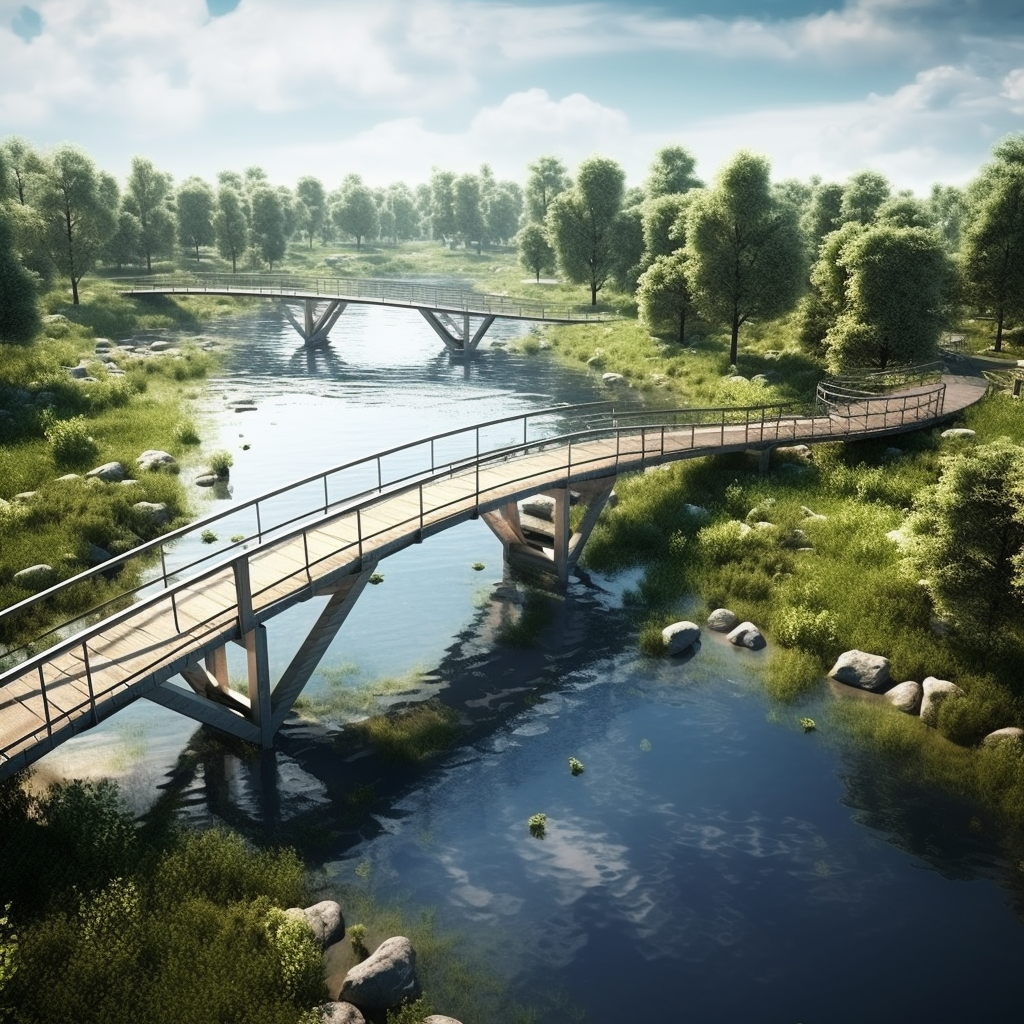
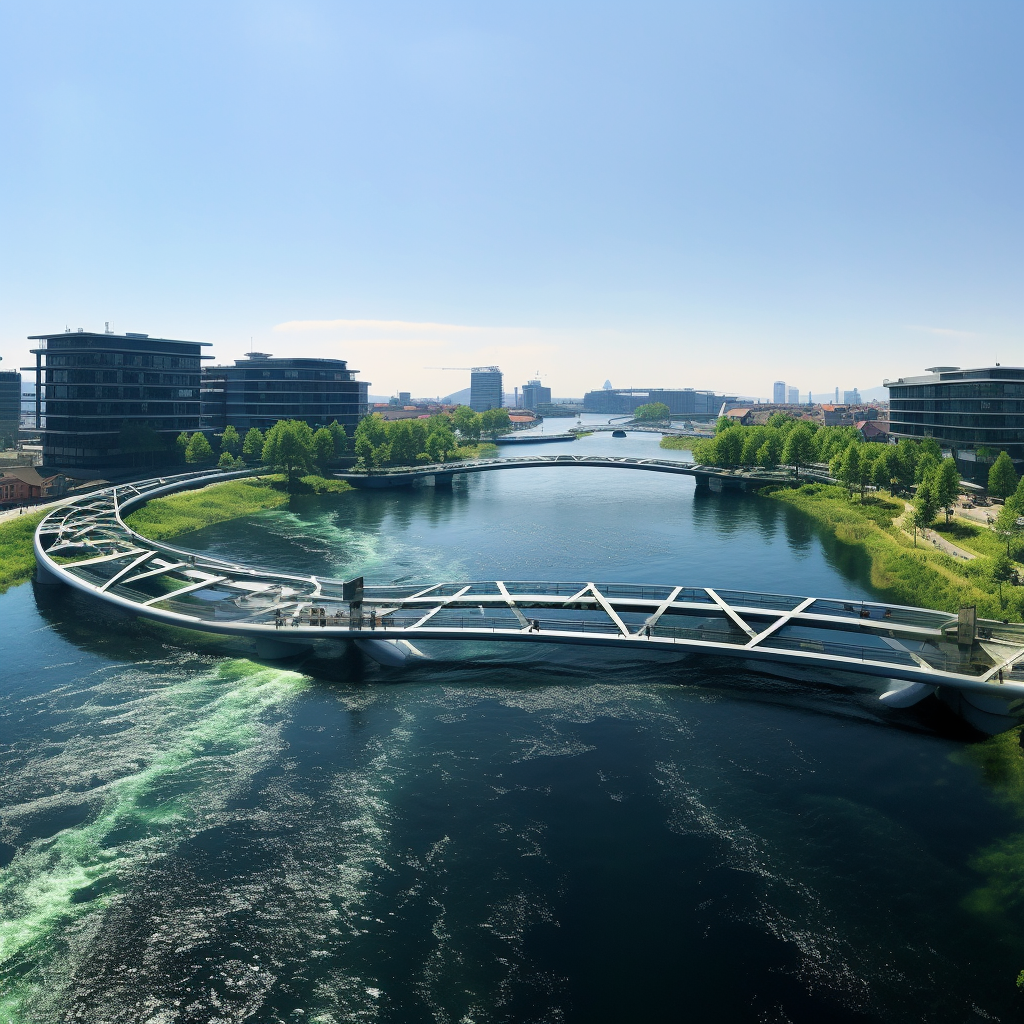
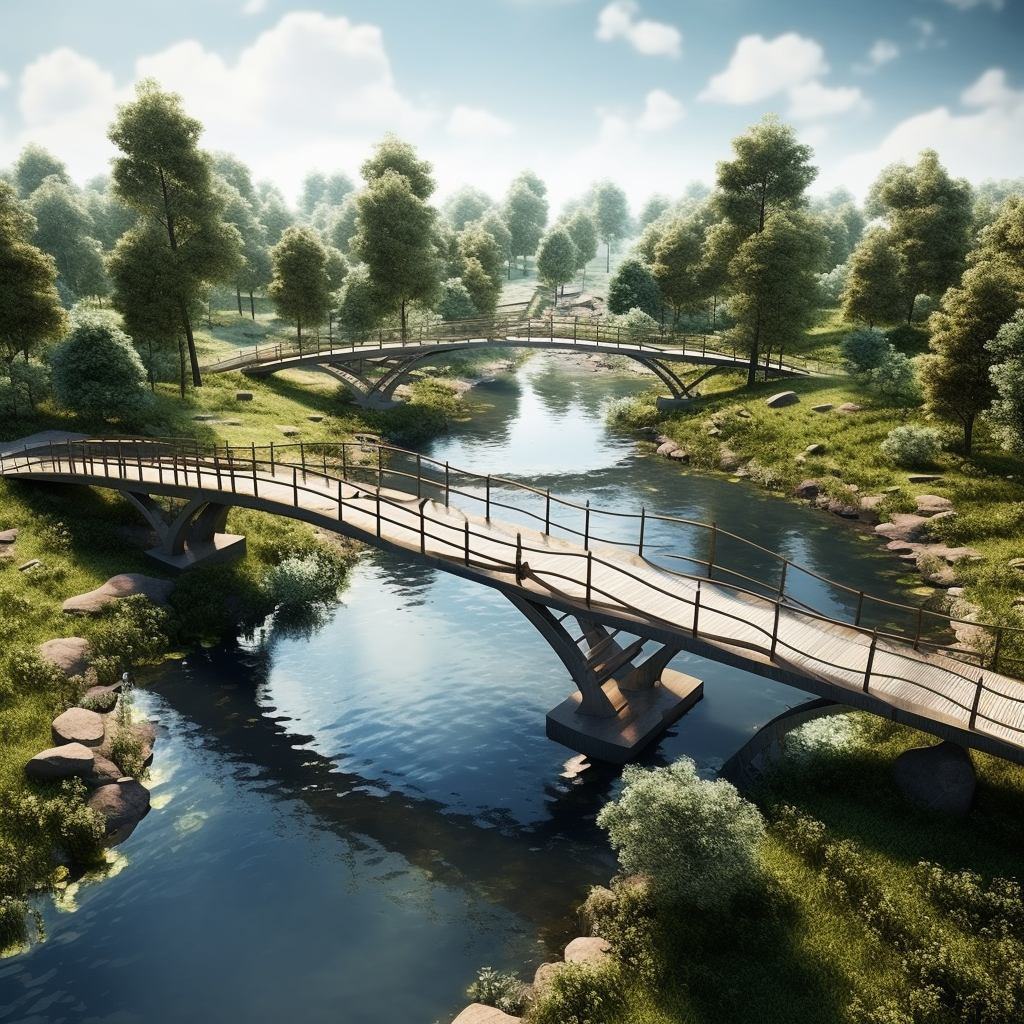
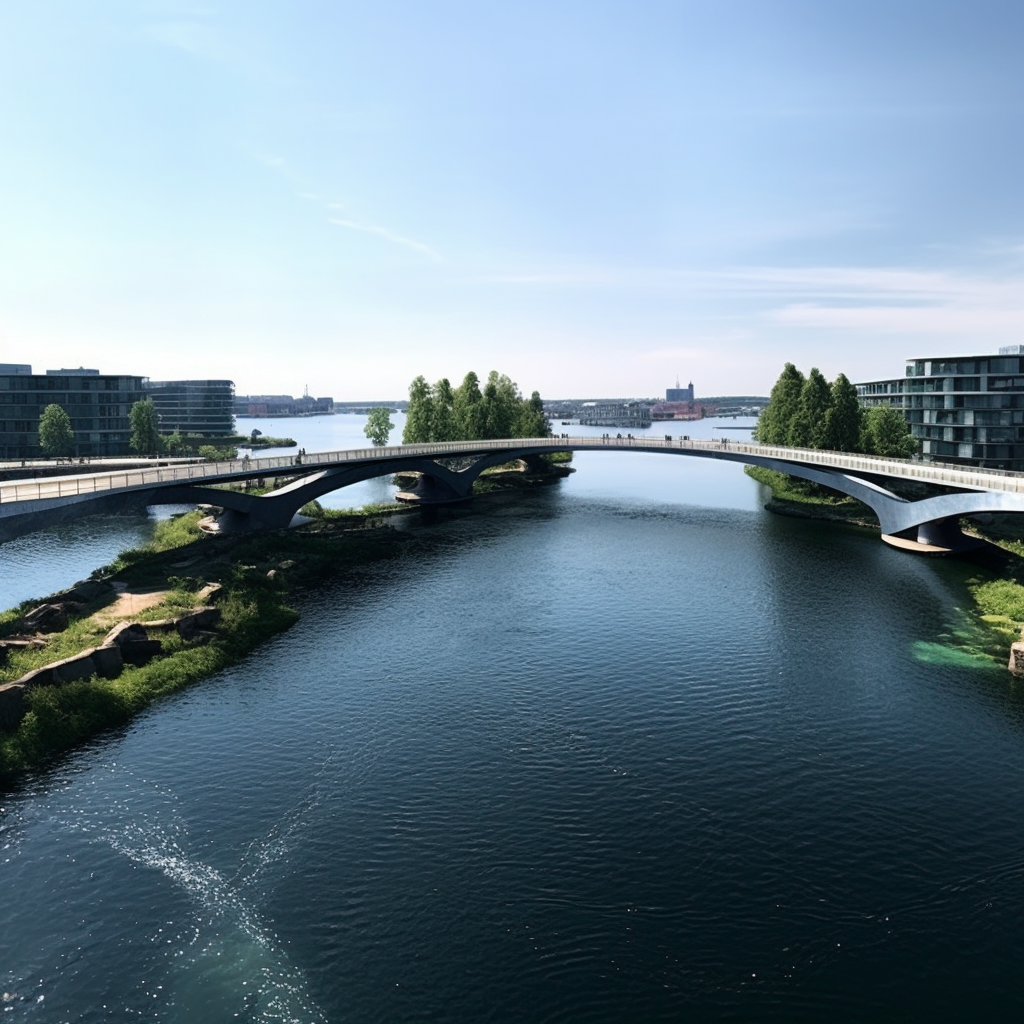
STEPS-PROCEDURE
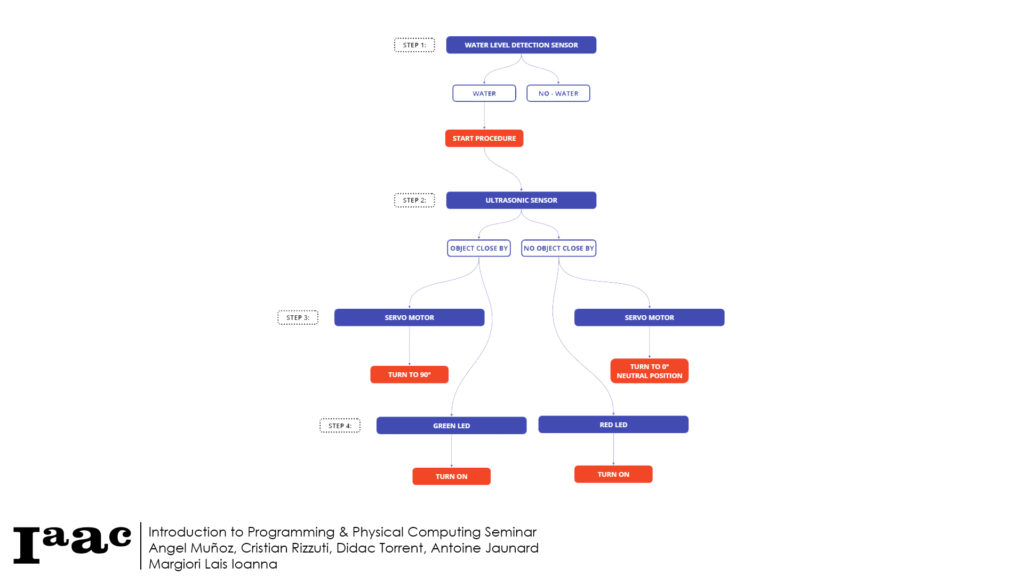
COMPONENTS REQUIRED
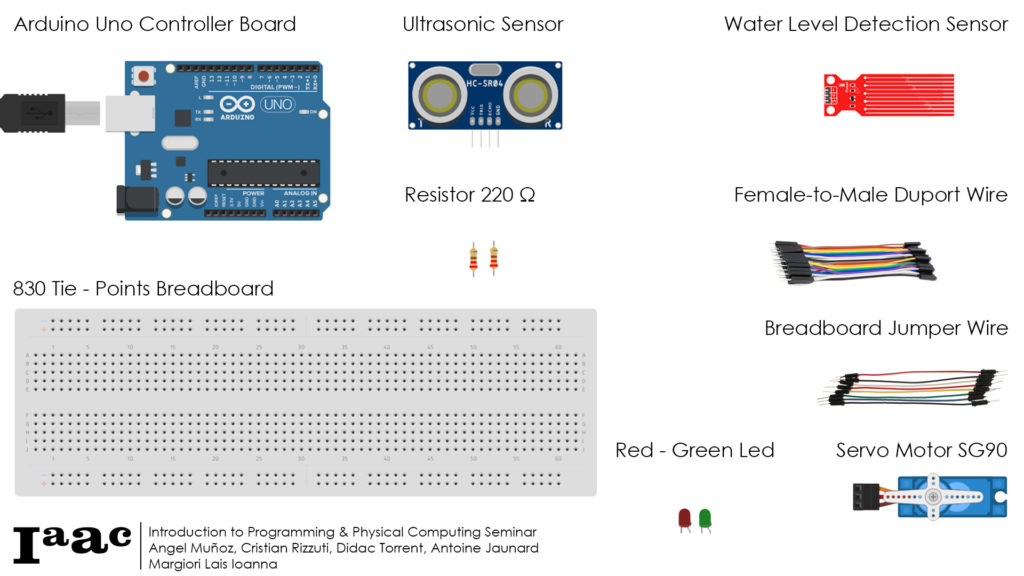
SCHEMATIC
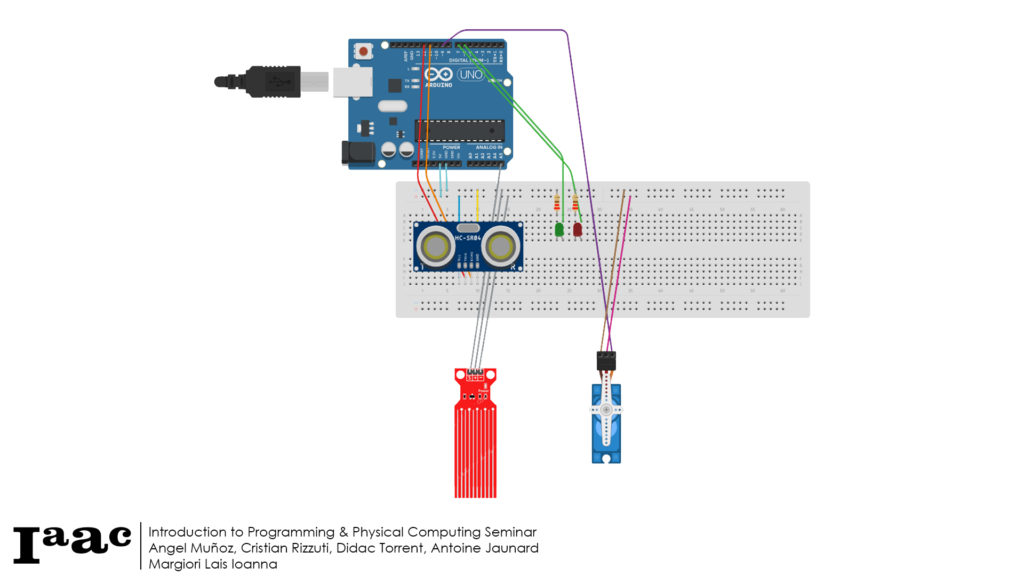
CONCEPT DIAGRAM
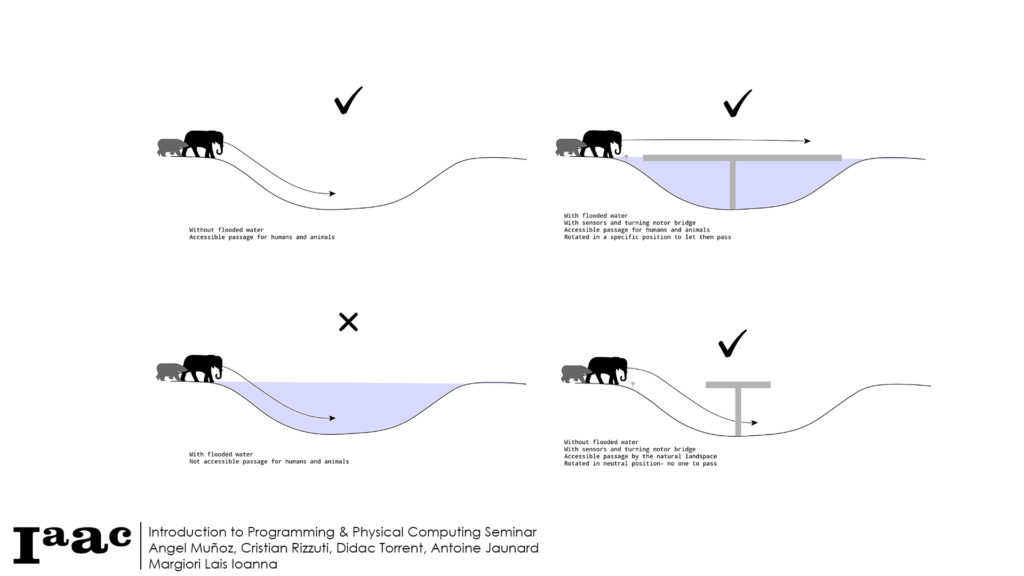
CODE


PICTURE



VIDEO

